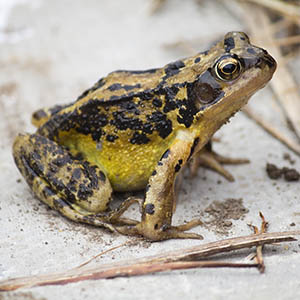Look after your ‘Garden Friends’

It may seem that everything in your garden wants to eat your prized plants but with some careful planning, you can restore order.
Whilst we’re familiar with the habits of garden pests, we sometimes forget about our wild garden friends. These ‘good guys’ work hard to keep pests in check and do a great job of keeping our garden ‘healthy’. By providing somewhere for them to feel safe, they’ll naturally find their way into your garden and do their job.
So who are these friends and what can we do to encourage them?
Beneficial Insects
The first group are the carnivorous insects and arachnids. Don’t worry, these guys aren’t out to eat you but they will keep populations of aphids and other damaging insects in check. Look out for Lady Birds, Hoverfly Larvae, Lacewings, Dragon Fly, Damsel Fly and Spiders. Even our native wasps will hunt down aphids with laser precision.
Ground dwellers, such as Centipedes and Ground beetles will eat also insects and grubs, including vine weevil, woodlice, caterpillars and slugs. They are a good indicator of healthy soil life.


You can attract many beneficial bugs and bees into your garden by offering them a home. Bumble bees, solitary bees and ladybirds like to like to crawl into holes, and other creatures prefer dry straw, and bark. Create a bug hotel or tie bundles of dried plant stems together to leave in sheltered places around your garden.
Beneficial Animals
The next group of ‘free’ garden helpers are of the animal kind: Hedgehogs, birds, frogs and toads. These guys love to eat slugs, snails and large quantities of other insects. It’s also worth noting that bats can eat up to 3000 insects in a night!
However, beneficial animals will only come into your garden if they feel safe and there’s an ample supply of food. This entails providing somewhere for them to hide and in being a little untidy in the further reaches of your garden.
Give a hedgehog a home
There were over 30 million hedgehogs in the UK during the 1950s but recent estimates suggest there are less than a million left. Given that they’re the gardener’s friend, it makes sense to give them somewhere to stay in your garden.
Hedgehogs need somewhere to hibernate in winter, so you can offer them a cosy home to entice them away from bonfire stacks and ensure they stay in your garden ready to feast on slugs and snails in the spring.


Like us, hedgehogs can be a little fussy about where they live. The box needs to be out of direct sunlight with the front entrance out of the wind. A quiet part of the garden under thick vegetation or behind a shed is ideal. Remember to fill the box with a layer of dead, dry leaves, preferably birch, oak, hawthorn or hazel.
Make room for frogs and toads
Hedgehogs are not the only ones looking for a safe spot to hibernate in the autumn. Frogs and toads will be also be scouting out suitable lodgings too, such as log piles, compost heaps and rockeries. They’ll even hibernate under sheds, stacked slabs and decking if they are available.


If you don’t have room for these then think about adding a frog house. Locate it in a quiet, shady part of the garden and fill with wet leaves as amphibians like to keep cool and wet over winter.
Your garden as a system
It’s useful to think of your garden as an interconnected system, where the plants, trees, flowers, seeds, fruits, pollinators, pests and garden friends are all essential elements that have their role to play.
When you start to think that way, you’ll see that successful gardening is more about managing and enhancing the system whilst enjoying its benefits and abundance.


